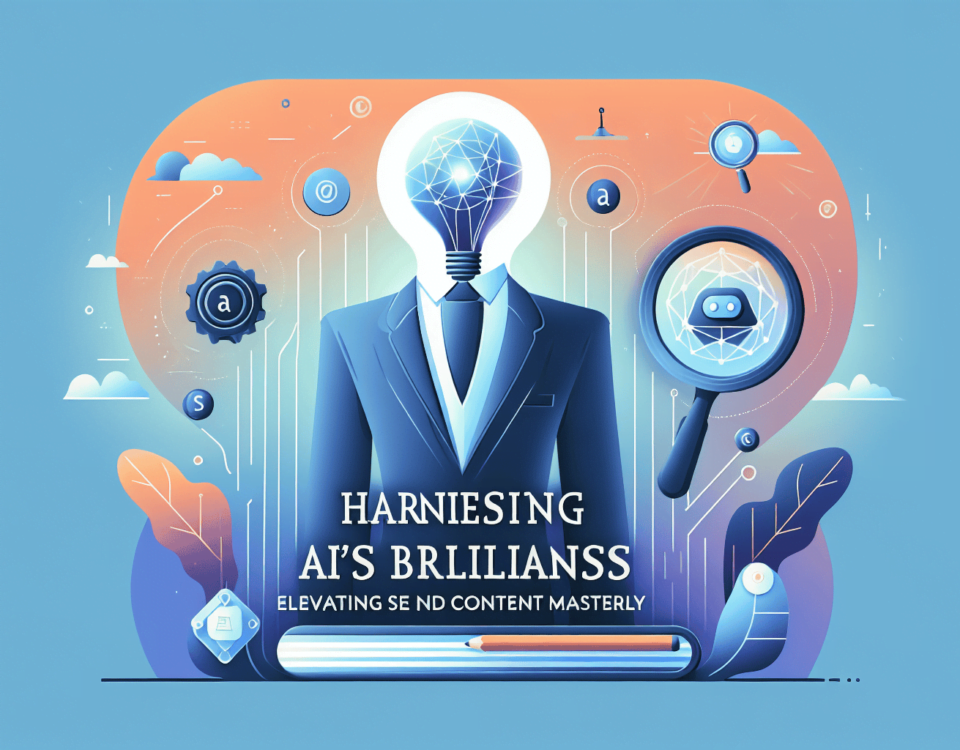The Fallacy of Busyness as Virtue
In today’s high-velocity work environments, busyness is often mistakenly equated with productivity and success. But is it really a badge of honor, or is it a red flag signaling poor personal strategy? In reality, the relentless pursuit of busyness can be counterproductive, leading to diminished clarity, increased stress, and ultimately, burnout. Moreover, it suggests a lack of strategic thinking about where to allocate our finite resource: time.
When we consider the dynamics of modern work culture, it becomes evident that being perpetually busy isn’t necessarily indicative of effective performance or value creation. Instead, it can represent a misalignment between one’s capabilities and tasks at hand. Author and strategic adviser Roger L. Martin postulates that a savvy personal strategy targets high-impact activities that leverage unique strengths, thereby ensuring that efforts are both purposeful and potent.
Statistics from the Journal of Occupational Health Psychology reveal that workers who are too busy to engage in strategic thinking are more likely to experience job strain and less likely to report job satisfaction. These indicators further debunk the supposed virtue of constant busyness and underscore the need to interrogate and refine one’s personal strategy.
Indeed, professionals ought to scrutinize their schedules, untangle the complexities of their commitments, and embrace strategic selectivity. By dismissing busyness as a measure of worth, individuals can begin to prioritize and thrive in their endeavors.
Navigating the Knowledge Economy’s Unique Challenges
The knowledge economy has revolutionized the way we conceive value creation, primarily focusing on information as a key economic driver. This shift has introduced unique challenges for those navigating their careers within this realm. Unlike traditional industries where expansion might involve adding more machinery or raw materials, the knowledge economy relies on a distinct set of resources—primarily human talent.
Every knowledge worker brings a non-fungible set of skills and experiences to their role, making replicability and scalability more complex. High-end talent like CEOs, head researchers, and brand gurus can become the cornerstone—indeed, the limiting factor—of an organization’s capacity to innovate and excel. Navigating this landscape, then, demands a shrewd assessment of how to most effectively deploy such bespoke human capital.
Additionally, research indicates that high-skilled knowledge workers are especially prone to the perils of cognitive overload—a consequence of the knowledge economy’s incessant demand for mental processing. Thus, personal strategy becomes not just important but essential to high-functioning individuals within this space.
Success in the knowledge economy is characterized by an ability to identify and focus on areas where one can offer the most value—areas where one’s specific knowledge, skills, and expertise can be harnessed to achieve a competitive edge. By doing so, knowledge workers and their organizations can convert potential challenges into platforms for leadership and growth.
Crafting Your Personal Where-to-Play How-to-Win Strategy
A personal Where-to-Play (WTP)/How-to-Win (HTW) strategy begins with a fundamental question: In what areas can I apply my time to create the most value? The WTP element focuses on selecting the arenas for action, such as specific projects, roles, or initiatives that align with one’s skills and goals. The HTW component involves formulating an approach for excelling in these chosen domains.
To forge a compelling WTP/HTW strategy, individuals must objectively assess their unique value proposition. This process typically involves introspection and sometimes tough decisions, as it may mean shedding long-held responsibilities or turning away opportunities to ensure alignment with one’s true competitive advantages.
A quote by Peter Drucker succinctly encapsulates this sentiment: “There is nothing so useless as doing efficiently that which should not be done at all.” Crafting your HTW presupposes a strategic alignment between your talents and the tasks at hand, ensuring that you’re not merely completing tasks, but creating value in every endeavor you undertake.
This strategic framework, once robustly articulated and meticulously adhered to, will serve as a compass, guiding individuals to make choices about where to invest their energy, time, and talent for maximum impact and satisfaction.
Leveraging Your Must-Have Capabilities
Your Must-Have Capabilities (MHC) are the core competencies that empower your HTW strategy. Identifying and developing one’s MHC is crucial, as these are the skills that set you apart from the competition, allow you to deliver exceptional results, and create a unique value proposition in your chosen WTP.
To effectively leverage MHCs, one must first conduct a candid assessment to pinpoint these pivotal traits. This may involve gathering feedback, examining past successes, and considering areas where one experiences the flow state—indicative of innate talent and expertise.
Once identified, these capabilities should be nurtured and honed to a level of mastery. Professional development activities, continued learning, and seeking out strategic projects that challenge and refine these abilities are all tangible ways to elevate your MHCs.
It’s important to note that MHCs can evolve over time. What’s considered a must-have today may become obsolete tomorrow. Hence, perpetual skill development is not just an asset, it’s an imperative. By adapting and expanding one’s capabilities in line with the WTP, you solidify your status as a key player within the knowledge economy.
Enabling Management Systems for Sustainable Success
An Enabling Management System (EMS) is the scaffolding that supports the strategic application of one’s MHC. But what makes an EMS both robust and resilient? Such a system should include goal-setting mechanisms, productivity tools, and feedback loops. Its purpose is to sustain strategic alignment, facilitate capability development, and ensure continuous improvement.
Creating an EMS necessitates a blend of self-discipline and external support systems. Tools may vary from simple time management software to complex project management programs—whatever enables you to consistently apply your MHC to your strategic priorities. Integration of personal and professional development plans into your EMS can also ensure longevity of your MHC.
To illustrate, a well-maintained EMS will not only keep track of deadlines but also reflect on performance, measuring it against both short-term outcomes and long-term aspirations. This reflective dimension is integral to recognizing when course corrections are necessary and to encourage ongoing strategic refinement.
Establishing an EMS isn’t a one-time task. It requires attentiveness and periodic updates to adapt to changes in personal goals, professional landscapes, and life circumstances. It’s the backbone of your strategy, supporting your quest for sustained success in an ever-evolving landscape.
A Dean’s Transformational Approach to Time Management
When it comes to mastering personal strategy, the transformative journey of Roger L. Martin during his tenure as Dean of the Rotman School of Management stands as a beacon. His radical reallocation of time from traditional tasks to high-value strategic priorities exemplifies the profound impact of an effective WTP/HTW strategy.
Martin’s approach included an overhaul of his daily activities, purposefully redirecting time towards initiatives such as intellectual property leadership and cultivating a culture of student service. By delegating financial management and faculty hiring to capable colleagues, he successfully freed up time to engage in activities that aligned with his unique capabilities and the school’s strategic needs.
This focused reallocation allowed Martin as the Dean to publish numerous books, engage in teaching, and maintain individual meetings with faculty, thereby fostering a motivational environment and steering the school to new heights of success. His effective use of time became a testament to the power of a personalized strategy.
The example set by Martin demonstrates that impactful leadership and professional fulfillment arise not from ceaseless busyness but from the intentional and strategic deployment of time in areas where one can create the most significant value.
Applying Practitioner Insights to Your Own Strategy
To adapt these principles to one’s professional life requires a thorough examination of current commitments and an unflinching will to realign them with one’s strategic objectives. What actionable steps can you take to synthesize these insights into your personal strategy?
Begin by evaluating your present WTP choices and consider how they align with your MHC. Are there areas where you can reduce involvement to make room for higher-impact activities? Next, assess the efficiency and relevance of your EMS. Does it bolster your strategic aims, or does it need recalibration?
Taking inspiration from leaders like Martin, think critically about which of your daily tasks are prime candidates for delegation or elimination. Empower others with the responsibility and the recognition for work they are perfectly able to execute, liberating your schedule for where your influence and expertise are most critical.
Lastly, reflect on how your recalibrated strategy leads you toward your Winning Aspiration. Your end goal is to retire each day with a sense of fulfillment rather than frustration, knowing that your time has been spent on what truly matters to you and your organization. The road from ‘too busy’ to ‘strategically engaged’ is rocky, but every step taken is a stride toward self-determined success.




